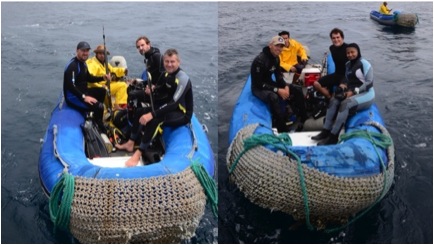The ride up to Darwin was smoother than expected. Despite the rough conditions of the past few days, we made it to our study site in 30 hours. However, diving conditions at the Arch have not been good. The water is warm for this time of year, but also very milky, resulting in a visibility of only about 5 meters. There has also been a very strong current to the north, which makes it difficult for the team to operate underwater. In the first two days, we have noticed that the hammerhead activity is much lower than usual for this time of year, and there is no sign of silky sharks. We had a whale shark encounter on our first two dives, but were unable to tag them. On the first dive on Day 2, Dr. Salinas tagged a 12 meter female, south of the Arch. We had no other encounters that day, but it was a good feeling to finally get a tag in and get the study started. The team is still at the Arch, and we are hoping to report more successful tags as the trip proceeds. The results from this year may provide us with insights about how whale sharks modify their migration route in response to the upcoming El Niño event.



